Every successful revolution eventually becomes the status quo and that’s certainly the case with NBA player-tracking data. These stats first debuted publicly on the NBA’s site for the 2013-14 season, offering objective data on things that were previously only measurable by the eye test — things like drives, pull-up jumpers vs. catch-and-shoot, passing numbers, touch locations and more.
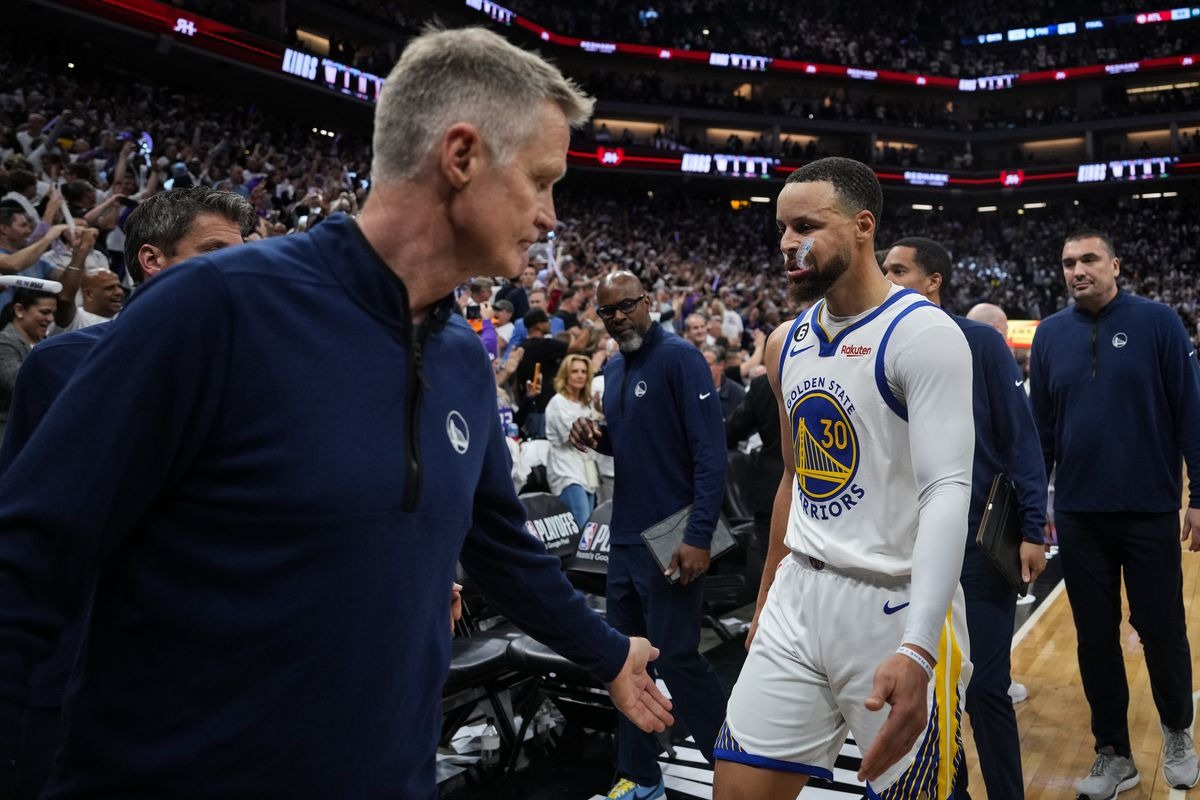
What’s publicly available on the NBA’s website is still rudimentary and the tip-of-the-iceberg compared to what’s available by subscription or accessible to teams. Still, it’s a much more granular data set than what’s available in the box score or through play-by-play data. And we now, with the 2022-23 season completed, have a full decade of numbers to sift through.
With this last little bit of offseason before training camps I thought it would be fine to look through some of the most interesting outliers from this data over the past 10 years, starting with the Golden State Warriors.

The Golden State Warriors are a passing dynasty
The era of public player tracking data has lined up neatly with the dynastic rise of the Golden State Warriors and has allowed us to understand and parse their greatness in ways that would not have been available in previous eras.
As Steph Curry and his teammates shattered records for 3-point shooting and offense, we were able to see things like their splits on catch-and-shoot and pull-up shots and measure the absurd amount of movement that their offense relied upon.
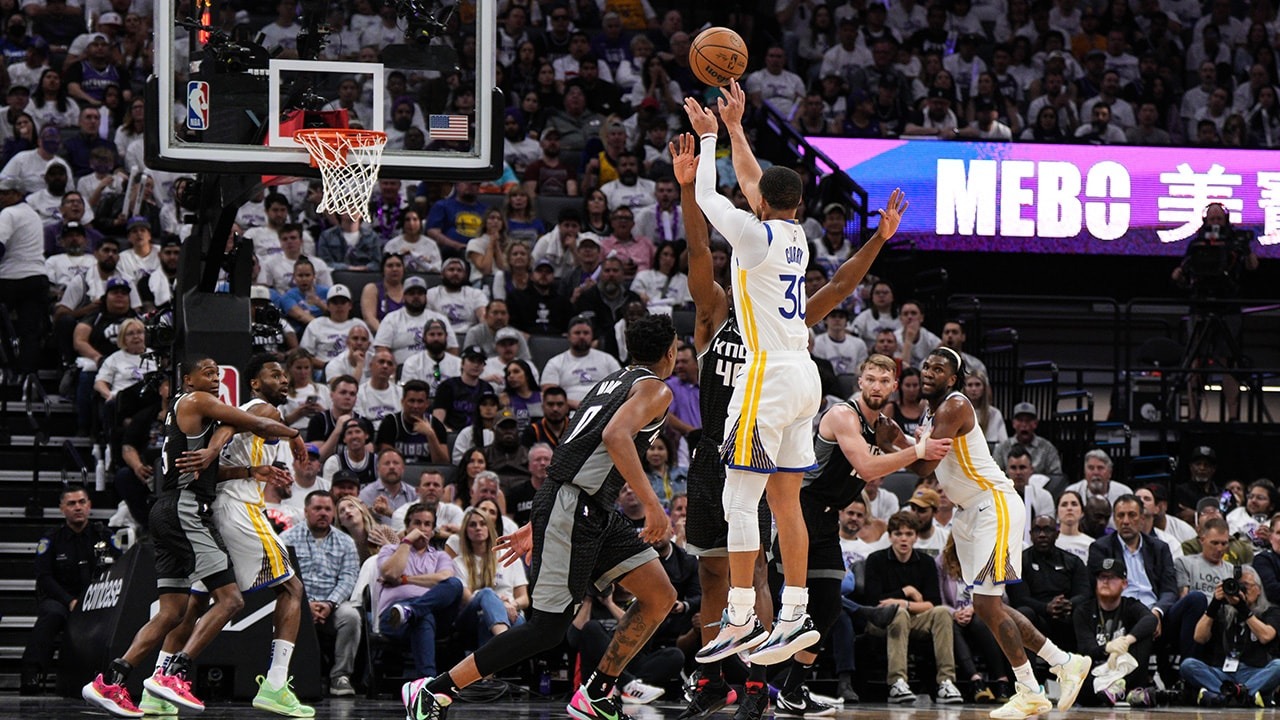
Over this era, they have consistently been near the top of many of the player-tracking passing statistics and looking at this data across an entire decade shows just how consistent and consistently exceptional they’ve been.
According to tracking data, the Warriors have thrown 245,177 regular season passes over the past decade. Two teams have passed more often — the Jazz and the 76ers — but there is an enormous drop-off between those two teams and the Indiana Pacers, who rank fourth.
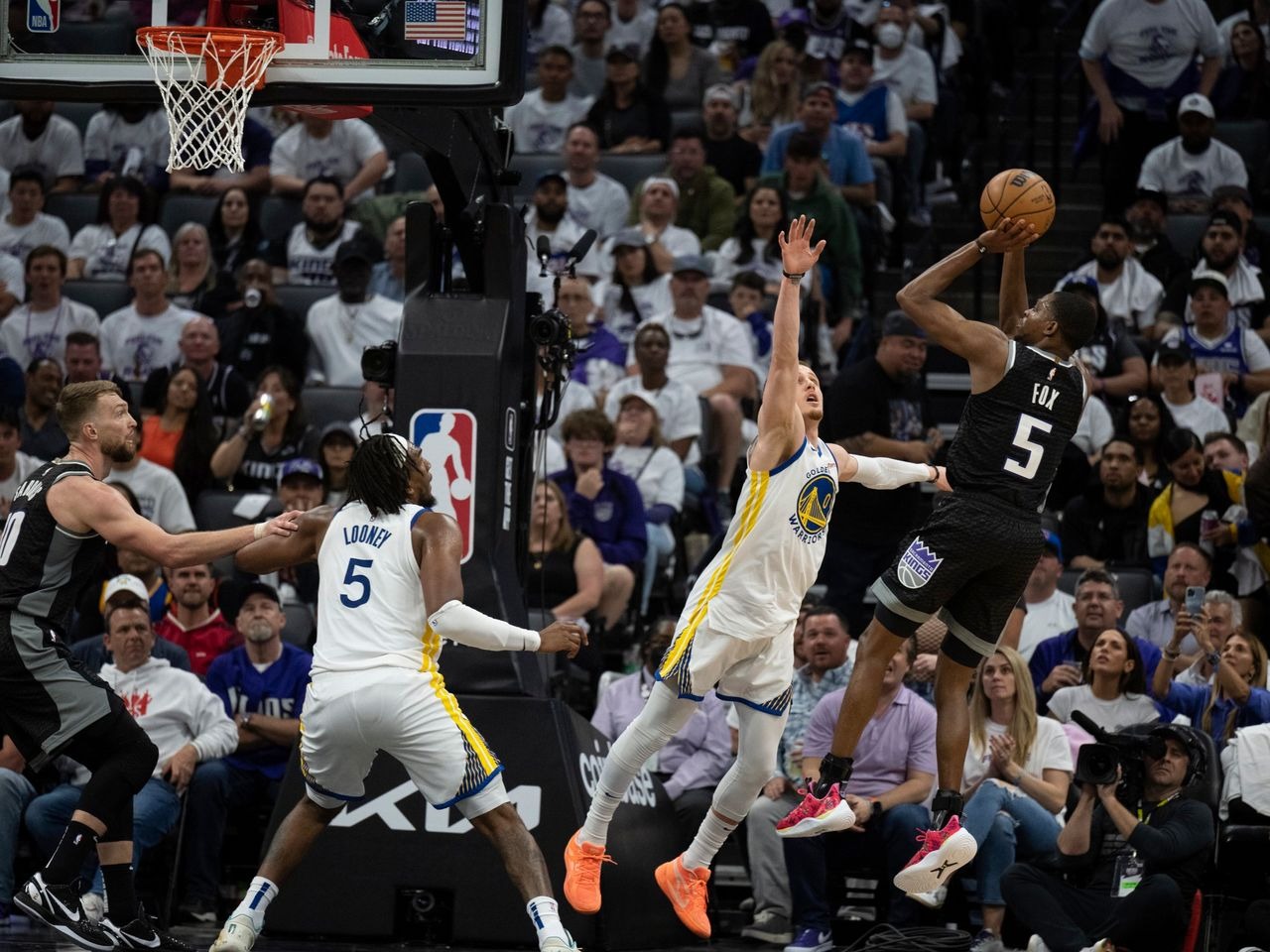
But what really separates the Warriors is not just how often they pass, but how well. The graph below shows every NBA team over the last decade, charted by what percentage of their made baskets were assisted on and what percentage of their assists also included a secondary assist (like a hockey assist — a pass that leads immediately to another pass that leads immediately to a made shot).
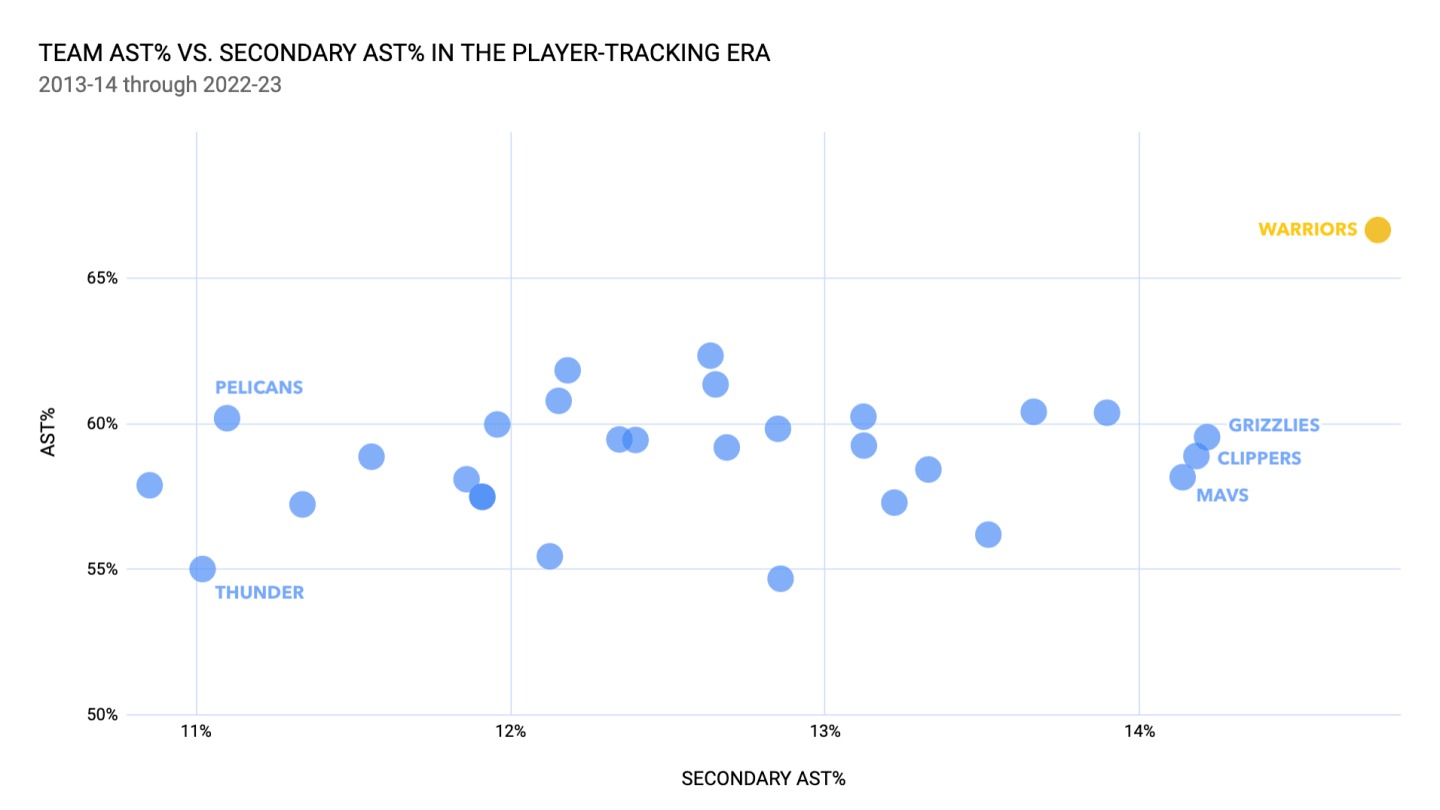
The Warriors are enormous outliers from the rest of the league in both measures. And their secondary assist percentage is mind-boggling. Essentially one out of every seven assists they’ve recorded over the past decade has come from a series of at least two passes, each completed within two seconds of each other.
The logical upshot is that the Warriors have scored a lot more points because of their assists than any other team over the past decade.
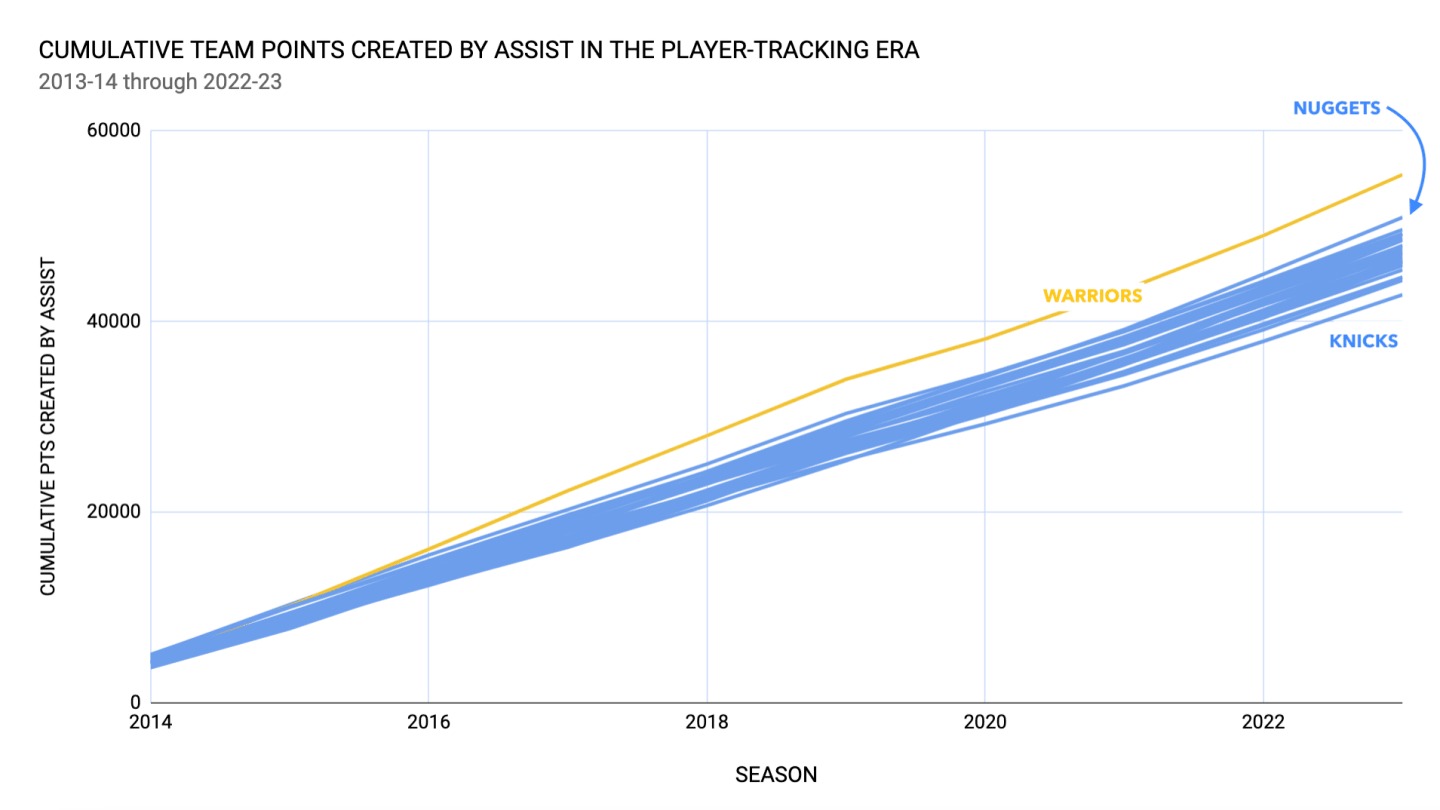
Over the past decade, the Warriors have created 55,405 points on assisted baskets, nearly 5,000 more than the Denver Nuggets, who had the second-most, and roughly 13,000 more than the Knicks, who have the least, over that span.
The difference between the Warriors and Nuggets — 4,488 points created by assist — is roughly the same as the difference between the Nuggets and the Cavaliers who have the 21st-most points created by an assist over the past decade.
This data for the Warriors is also more reflective of a single pool of players and a cohesive system than any other team. Steve Kerr has been coaching there for nine years and Klay Thompson, Draymond Green and Curry have been there for the entire decade.
We think of the Warriors as perhaps the greatest shooting team of all time. But they might be the greatest passing team of all time, too.